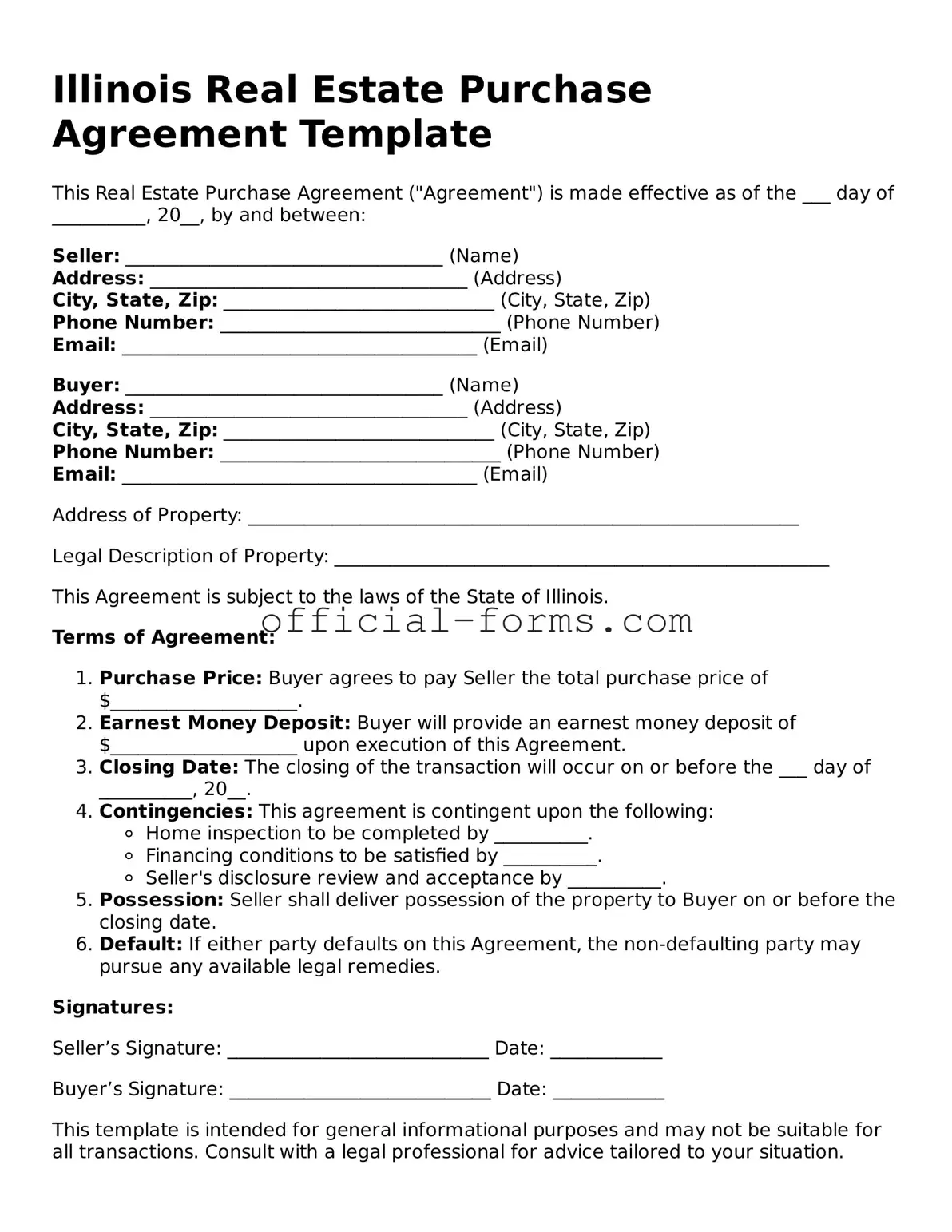Filling out the Illinois Real Estate Purchase Agreement form can be a complex task. Many individuals make mistakes that can lead to confusion or complications later on. One common error is failing to include all necessary parties in the agreement. It is essential to list all buyers and sellers accurately. Omitting a party can create legal issues down the line.
Another frequent mistake involves incorrect property descriptions. Buyers and sellers should ensure that the property’s address, legal description, and any relevant details are accurate. Incomplete or vague descriptions can lead to disputes regarding the property being sold.
People often overlook the importance of specifying the purchase price. Clearly stating the agreed-upon price is vital for both parties. Without this information, the agreement lacks clarity, which can lead to misunderstandings.
Additionally, some individuals fail to include contingencies. Contingencies are conditions that must be met for the agreement to remain valid. Examples include financing, inspections, or repairs. Not addressing these can leave one party vulnerable to unexpected issues.
Another mistake is neglecting to review deadlines. Timelines for inspections, financing, and closing dates are critical. Missing these deadlines can jeopardize the transaction and may result in the loss of the property or deposit.
People sometimes sign the agreement without fully understanding its terms. It is crucial to read and comprehend all clauses before signing. Misunderstandings can lead to disputes and dissatisfaction later in the process.
Finally, not seeking professional assistance can be a significant oversight. Real estate transactions involve legal complexities. Consulting with a real estate agent or attorney can provide guidance and help avoid common pitfalls.
